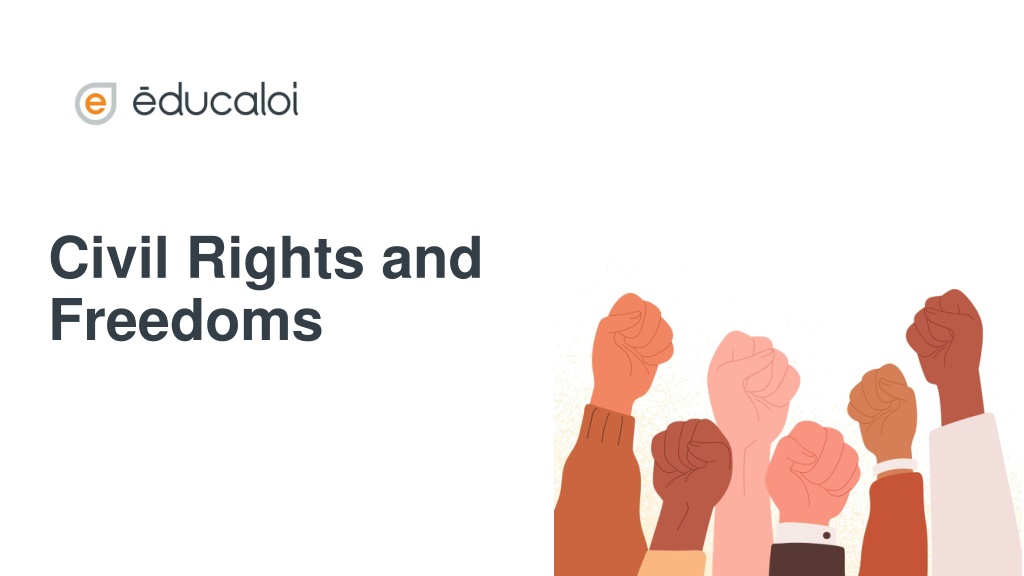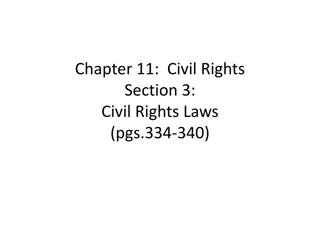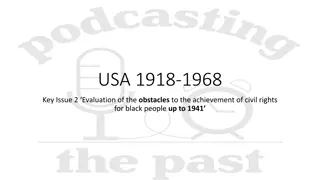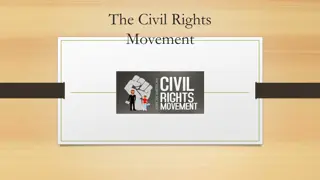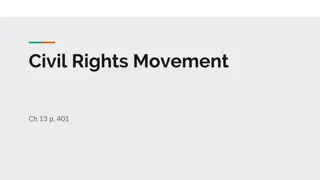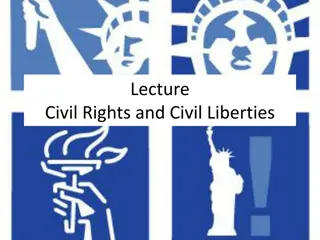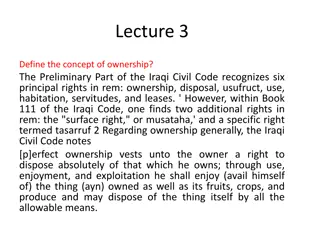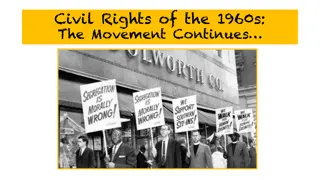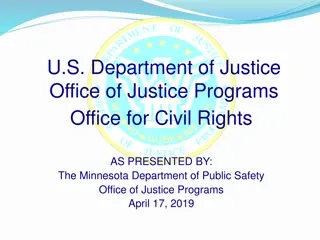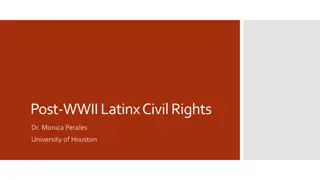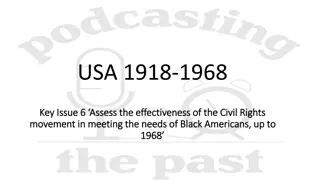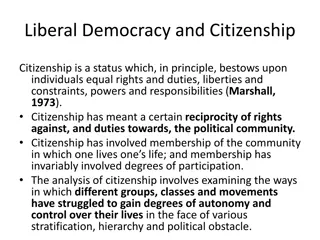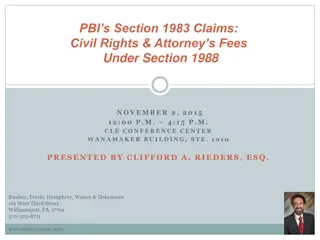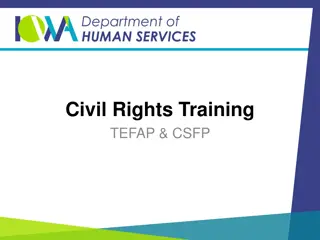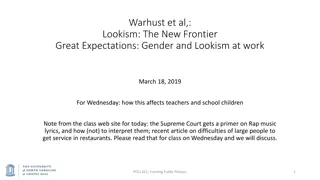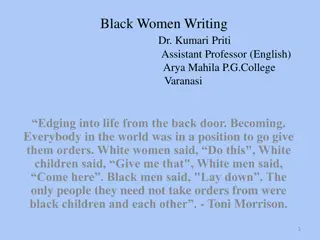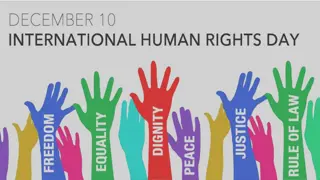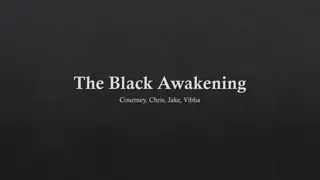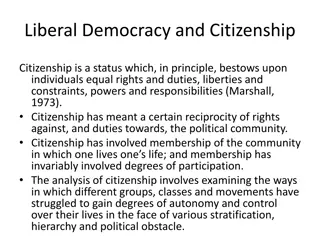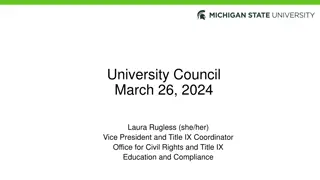Struggles for Civil Rights and Women's Rights in North America
Explore the historical journey of civil rights movements in the United States and women's rights movements in Quebec. From the challenges faced to the significant events that brought about change, learn about the fight against discrimination and the progress made towards equality over the years.
Download Presentation

Please find below an Image/Link to download the presentation.
The content on the website is provided AS IS for your information and personal use only. It may not be sold, licensed, or shared on other websites without obtaining consent from the author. Download presentation by click this link. If you encounter any issues during the download, it is possible that the publisher has removed the file from their server.
E N D
Presentation Transcript
Civil Rights and Freedoms
Civil Rights and Freedoms 1. History of the civil rights movement in the United States 2. History of the women s rights movement in Quebec 3. What is discrimination? 4. Reporting discrimination 5. Movements today? How are laws changed?
History of the civil rights movement in the United States
History of the civil rights movement in the United States Causes Though the 14th Amendment (passed in 1868) guarantees equal protection under the law to everyone, black people still were not treated fairly. Laws enacted between 1877 and 1964 (Jim Crow Laws) even legalized discrimination in some of the southern states: Segregation (separation of black people from white people) o In public services and gathering places o In schools o In certain neighbourhoods Black people and white people couldn t marry each other.
History of the civil rights movement in the United States Events: 1868: 14th Amendment 2008: First black president 1964 : Civil Rights Act 1963: Speech of Martin Luther King Jr. at the Lincoln Memorial 1965: Voting Rights Act
Lutte pour les droits des femmes au Qu bec
History of the womens rights movement in Quebec Causes Before progress was made in the area of women s rights, women did not have the same rights and opportunities as men. Until about 100 years ago, women could not hold most types of jobs, study in most programs, manage their own money, or vote or run for office. Idola Saint-Jean accompanied by Suffragettes at the founding of the Provincial Committee for Women s Suffrage (1922) Women also had the duty to obey their husband in all situations.
History of the womens rights movement in Quebec Events: 1941: Women allowed to practise law in Quebec. 1927: Creation of the Canadian Alliance for Women s Vote in Quebec. 1975: Prohibition against discrimination based on sex 1964: Act respecting the legal capacity of married women 1993: First female Prime Minister of Canada 1961: First female Member of the National Assembly in Quebec 1940: Women granted the right to vote in Quebec 1917: Women granted the right to vote in Canada (federal elections)
Today : Gender Inequality Index: Statistics used in the calculation: Rate of high school graduation Rate of employment Share of female managers Share of parliamentary seats Maternal mortality ratio Adolescent birth rate
La discrimination Discrimination Prohibited behaviours: Disobeying a municipal law Crimes And more
How does the law define discrimination? Quebec s Charter of Human Rights and Freedoms prohibits 17 types of discrimination. How many can you name?
The 17 grounds for discrimination Age Sex Ethnic or national origin, race or colour Pregnancy Religion Disability or any means used to reduce the impact of a disability Gender identity or expression Political convictions Languag e Social condition Sexual orientation Civil status
In Quebec: Protection against hate speech Discrimination Hate speech Discrimination is a prohibited behaviour. It prevents a person from receiving equal treatment based on a personal characteristic. Hate speech is a crime. It targets an identifiable group and encourages violence toward this group. What is it? File a complaint with the Commission des droits de la personne et des droits de la jeunesse (human rights commission). If you witness or are a victim of hate speech that is serious and causes you to fear for your safety or for somebody else s safety, you can report it to the police. What should I do if I witness it or it happens to me? Do you agree that freedom of expression has certain limits?
Changing the Laws
Many of these changes came into effect when laws were amended. Who decides on the laws? Law In Quebec, the 125 Members of the National Assembly elected by the people of Quebec introduce bills in the National Assembly. Representative (Member of the National Assembly) Each MNA represents the residents living in their area (riding).
How does a bill become a law? 3. Committee stage 4. Report stage 1. Introduction of the bill 2. Passage in principle 5. Passage 6. Assent 1.5 Consultation in a parliamentary committee Legend: = At the National Assembly = At the office of the Lieutenant- Governor = In a parliamentary committee
Instagram/educaloi_en YouTube/educaloi Facebook/educaloi educaloi.qc.ca/en
